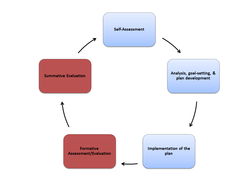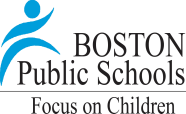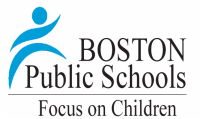Formative and Summative Assessment/eValuation

The summative and formative assessments and evaluations are designed to support the growth of all educators and to hold them accountable for meeting the needs of their students. All teachers will receive a formative assessment or evaluation sometime in their plan (typically, midway through it) and a summative evaluation at the end of the cycle. Evaluators determine what kind of plan a teacher will be on in the following year based on the summative evaluation.
Requirements
- Both formative and summative assessments/evaluations are directly determined by evidence gathered from the educator and the evaluator, including submitted artifacts and at least two classroom observations. The evidence collected is used to determine the educator’s level of proficiency in each of the four Standards of Effective Teaching, as well as the educator’s progress toward achieving their Student Learning and Professional Practice goals.
- If an educator is on a two-year self-directed growth plan, then a formative evaluation will occur by the end of the first year of the cycle and a summative evaluation by the end of the second year.
- Educators on any other plan will receive a formative assessment at some point midway in the plan, and a summative evaluation at the end of the cycle.
- Evaluators are expected to give concrete and actionable feedback for educators for improvements to practice. Educators have five days to comment on their assessments/evaluations in order for the comments to be saved into the online system, EDFS.
Best Practices
- Formative Assessments are most valuable when they encourage ongoing conversations, prompt reflection, and gauge the need for targeted support to teachers or teams.
- Evaluators should use formative assessments/evaluations to take stock of gaps in evidence that might prevent the writing of well-informed summative evaluations.
- Both positive feedback and prescriptions are most valuable to a teacher when assessments and evaluations are given in a timely manner. This way, educators can reflect on and make thoughtful changes to practice, rather making rushed changes that do not lead to sustained improvements in student learning.
Components of Formative and Summative Assessment/Evaluation
Both formative and summative assessments/evaluations will involve the following:
1. Progress in Student Learning and Professional Practice Goals: This feedback determines whether or not the educator exceeded, met, made significant progress, made some progress, did not meet, or not enough data was available to determine progress in both goals, along with a rationale to support each rating.
2. Proficiency in the Four Standards on the Effective Teaching Rubric: In the standards of Curriculum, Planning, and Assessment, Teaching All Students, Family and Community Engagement, and Professional Culture, the educator will receive a rating of exemplary, proficient, needs improvement, or unsatisfactory, along with a rationale to support each rating.
3. Prescriptions: For educators who received a previous year’s rating or a formative rating of needs improvement or unsatisfactory in any area/goal, evaluators will write a prescription that includes: the indicator attached to the prescription, a statement of the problem, evidence/description of the problem, and a prescription for the problem.
4. Overall Comments: Both evaluators and educators may leave overall comments about the assessment/evaluation as a part of the written record in the online system.
Overall Rating: On the Overall Rating page, educators will see a summary of their Goals rating, ratings on the Four Standards, and their overall rating.
1. Progress in Student Learning and Professional Practice Goals: This feedback determines whether or not the educator exceeded, met, made significant progress, made some progress, did not meet, or not enough data was available to determine progress in both goals, along with a rationale to support each rating.
2. Proficiency in the Four Standards on the Effective Teaching Rubric: In the standards of Curriculum, Planning, and Assessment, Teaching All Students, Family and Community Engagement, and Professional Culture, the educator will receive a rating of exemplary, proficient, needs improvement, or unsatisfactory, along with a rationale to support each rating.
3. Prescriptions: For educators who received a previous year’s rating or a formative rating of needs improvement or unsatisfactory in any area/goal, evaluators will write a prescription that includes: the indicator attached to the prescription, a statement of the problem, evidence/description of the problem, and a prescription for the problem.
4. Overall Comments: Both evaluators and educators may leave overall comments about the assessment/evaluation as a part of the written record in the online system.
Overall Rating: On the Overall Rating page, educators will see a summary of their Goals rating, ratings on the Four Standards, and their overall rating.
Printer-friendly version:
| guide_10_-_formative_and_summative_assessments_and_evals_intro.docx | |
| File Size: | 83 kb |
| File Type: | docx |

